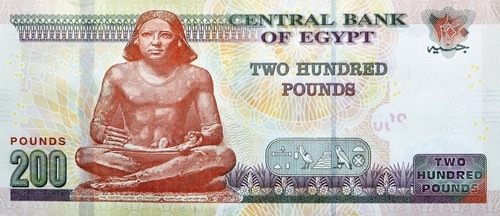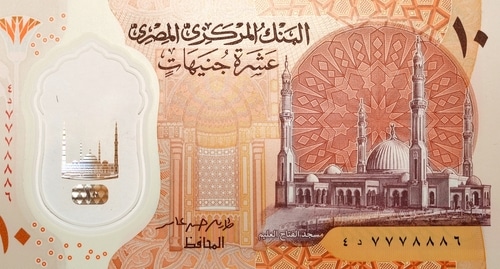If you want to send money to Egypt or if you will go there soon, you need to know about the Egyptian Pound. The code for this money is EGP. Some people also call it LE. The pound is a big part of the way people in Egypt live and the way the economy works.
In this guide, we will look at where the Egyptian Pound comes from. We will talk about how people use it today. You will read about what can change its value. The guide will also share some interesting facts about the Egyptian Pound in culture that make this currency stand out.
Egyptian Pound Basics
- Currency Name: The currency in Egypt is called the Egyptian Pound.
- Currency Code: The code for the Egyptian Pound is EGP.
- Subunits: One pound has 100 piasters. In Arabic, piaster is called qirsh.
- Common Abbreviation: People often use LE for this currency. It comes from the French words “livre égyptienne”.
- Symbol: The symbol is usually written as “E£”. Here, “E” stands for Egypt and the £ symbol is the same symbol used for the British pound.
Banknotes and Coins:
- Banknotes: There are notes of 200, 100, 50, 20, 10, 5, and 1 pound. You will also find notes for 50 and 25 piasters.
- Coins: Coins come in 1 EGP as well as 50, 25, and 10 piasters.
A Brief History of the Egyptian Pound
The Egyptian Pound came into use in 1836. A law was made then that set a national currency based on gold and silver. In the early 1900s, Egypt started to use the gold standard. Soon after, in 1899, the National Bank of Egypt began to give out the country’s own paper money.
A key moment took place in 1914. At this time, the Egyptian Pound was officially set as the country’s main unit of money. Since then, its look and value have changed a lot, mostly during times when the country had political or money problems. One big event happened in 2016. Egypt let the EGP flow freely in the open market. This choice made the value of the EGP change a lot, but it also helped it match with money from around the world.
Understanding Exchange Rates for the Egyptian Pound
The EGP is now a floating currency. This means that the value can go up or down based on the world market. It is not tied to the US dollar or British pound anymore like it was many years ago. Because of this, the exchange rates change day by day.
Tip: Before you send money to Egypt or change your money, always look at the current exchange rate. You can use a good source, like Remitly’s app or website, to get up-to-date and correct information.
5 Fascinating Facts About the Egyptian Pound
Size Reflects Value
Egyptian banknotes get bigger as the amount goes up. A 200-pound note is bigger than a 10-pound note. This helps people tell one note from the other by looking at their size.
Bilingual Notes
Every bill has Arabic on one side and English on the other. The Arabic side often shows Islamic buildings. The English side has old Egyptian pictures, like pharaohs and temples.
Rich Historical Imagery
Egyptian coins show a long story of the country through pictures of Tutankhamun, Cleopatra, and big landmarks like the Pyramids of Giza. Tutankhamun is on the 1-pound coin to remind us of Egypt’s great history.
Security Features Have Evolved
Egypt started putting watermarks on its bills in 1930, and added metal threads in 1968. These things make money safer and harder to copy.
Colorful Nicknames
People have fun slang names for money:
- Bolbol (“nightingale”) = 1 pound
- Gondi (“soldier”) = 1 pound
- Baku = 1,000 EGP
- Arnab (“rabbit”) = 1 million EGP
- Feel (“elephant”) =
Planning to Visit Egypt?
Egypt is one of the best places to visit. There is more in the country than old buildings. You can:
- Go diving and see coral reefs in the Red Sea
- Take a cruise on the Nile River
- Learn about history in Luxor
- Enjoy the busy city life in Cairo
- Ride over sand dunes in a 4×4
No matter where you go, knowing how to use and understand the local money can help you feel sure about what you are doing. This will make things easier when you are at a market or when you book a tour.
Final Thoughts
The Egyptian Pound is more than just money. It helps tell Egypt’s story. If you use Remitly to send money or go see Egypt for yourself, knowing about the EGP can help you feel closer to the people of Egypt and to their past.
If you want to send money to Egypt, look at today’s exchange rate on Remitly. You will see how easy and safe global transfers can be.
Frequently Asked Questions About the Egyptian Pound (EGP)
What is the currency symbol for the Egyptian Pound?
The Egyptian Pound is commonly represented by E£, combining “E” for Egypt and the “£” symbol derived from the British pound.
What is the difference between EGP and LE?
Both refer to the same currency. EGP is the official ISO currency code used in banking and international transfers, while LE (short for livre égyptienne) is a more informal, local term often used in everyday transactions and pricing.
Can I use US dollars or euros in Egypt?
While major hotels and tourist areas may accept foreign currency, it’s best to use Egyptian Pounds for most purchases. Exchange your currency at a bank, ATM, or licensed currency exchange for the best rate.
What denominations of Egyptian currency are currently in use?
Paper notes: 200, 100, 50, 20, 10, 5, 1 EGP, and 50 and 25 piasters
Coins: 1 EGP, 50, 25, and 10 piasters
Why does the exchange rate for the EGP change so often?
The Egyptian Pound operates under a floating exchange rate, meaning its value is determined by market supply and demand. This causes rates to fluctuate daily, especially in times of economic uncertainty.
Is it better to exchange money in Egypt or before I travel?
Generally, you’ll get a better rate in Egypt, especially at banks or local exchange offices. Avoid exchanging large amounts at airports, which may offer less favorable rates.
Are credit cards widely accepted in Egypt?
Credit and debit cards are accepted in many urban and tourist areas, but cash is still preferred, especially in markets, small shops, and rural regions.


